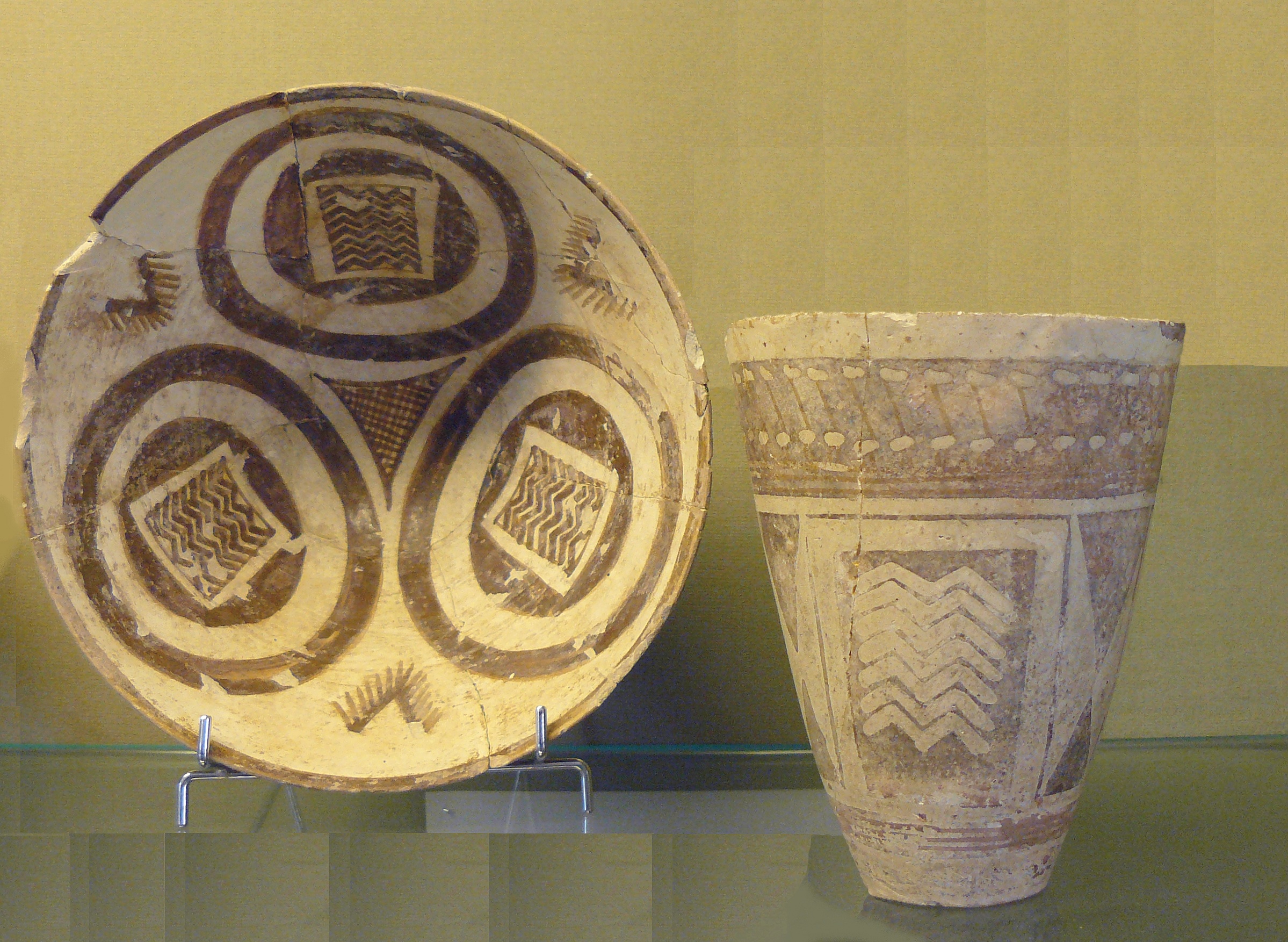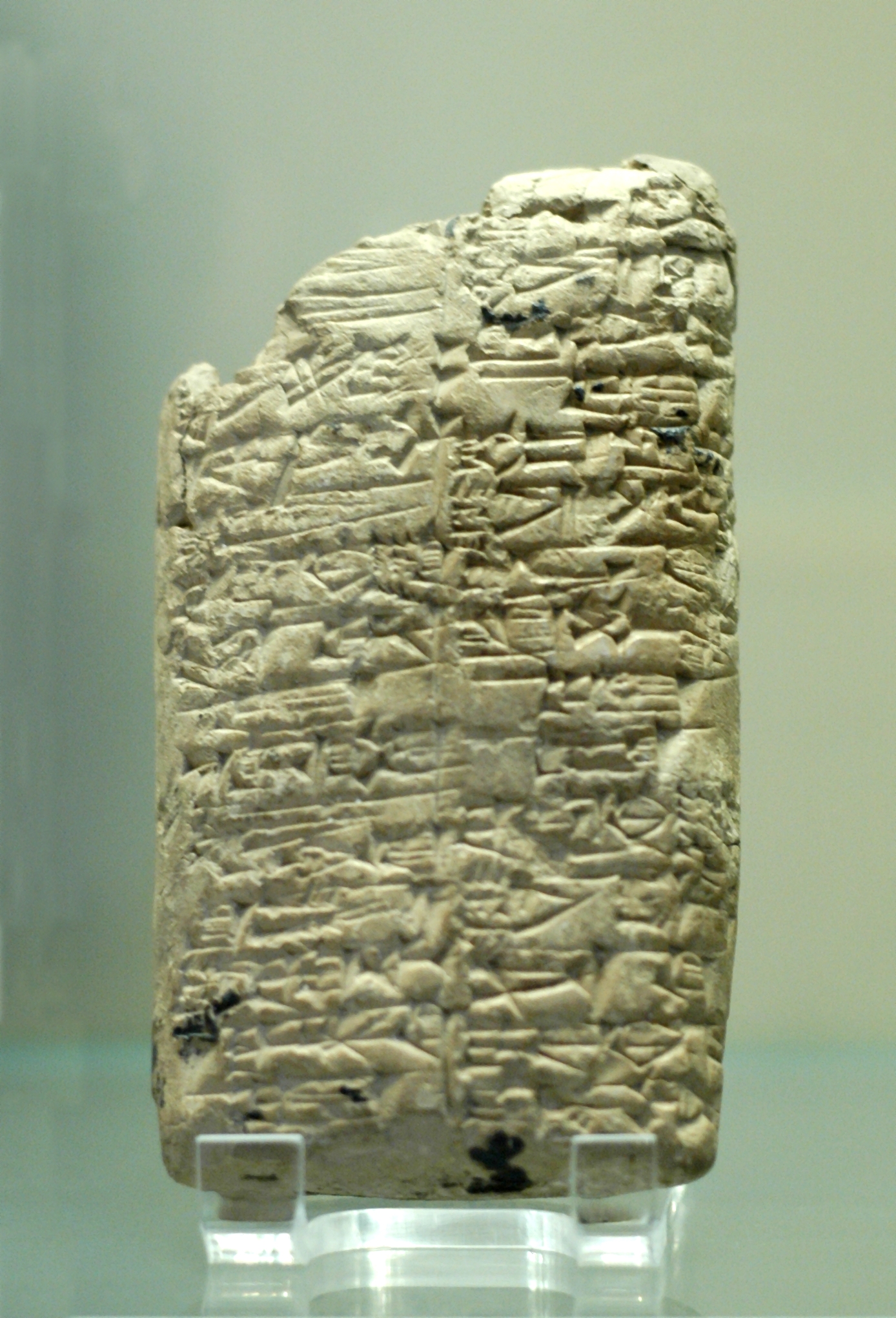|
Godin Tepe
Godin Tepe is an archaeological site in western Iran, located in the valley of Kangavar in Kermanshah Province. Discovered in 1961, the site was excavated from 1965 to 1973 by a Canadian expedition headed by T. Cuyler Young Jr. and sponsored by the Royal Ontario Museum (Toronto, Ontario, Canada). The importance of the site may have been due to its role as a trading outpost in the early Mesopotamian trade networks. Archaeology The earliest evidence for occupation at Godin comes from Periods XI through VII, spanning the Early and Middle Chalcolithic. The site was already inhabited as early as c. 5200 BC. Seh Gabi Because Godin has such a deep stratigraphy, it was decided that a related site of Seh Gabi nearby should also be studied. Seh Gabi is located 6 km northeast of Godin Tepe in the Kangavar valley. The deeper levels were easier to reach there. Originally, the excavations at Godin concentrated on levels II (ended c. 500 BC?) to V (c. 3200 BC-3000 BC), but the transit ... [...More Info...] [...Related Items...] OR: [Wikipedia] [Google] [Baidu] |
Susa
Susa ( ; Middle elx, 𒀸𒋗𒊺𒂗, translit=Šušen; Middle and Neo- elx, 𒋢𒋢𒌦, translit=Šušun; Neo-Elamite and Achaemenid elx, 𒀸𒋗𒐼𒀭, translit=Šušán; Achaemenid elx, 𒀸𒋗𒐼, translit=Šušá; fa, شوش ; he, שׁוּשָׁן ; grc-gre, Σοῦσα ; syr, ܫܘܫ ; pal, 𐭮𐭥𐭱𐭩 or ; peo, 𐏂𐎢𐏁𐎠 ) was an ancient city in the lower Zagros Mountains about east of the Tigris, between the Karkheh and Dez Rivers in Iran. One of the most important cities of the Ancient Near East, Susa served as the capital of Elam and the Achaemenid Empire, and remained a strategic centre during the Parthian and Sasanian periods. The site currently consists of three archaeological mounds, covering an area of around one square kilometre. The modern Iranian town of Shush is located on the site of ancient Susa. Shush is identified as Shushan, mentioned in the Book of Esther and other Biblical books. Name The English name is der ... [...More Info...] [...Related Items...] OR: [Wikipedia] [Google] [Baidu] |
Hajji Firuz Tepe
Hajji Firuz Tepe is an archaeological site located in West Azarbaijan Province in north-western Iran and lies in the north-western part of the Zagros Mountains. The site was excavated between 1958 and 1968 by archaeologists from the University of Pennsylvania Museum of Archaeology and Anthropology. The excavations revealed a Neolithic village that was occupied in the second half of the sixth millennium BC where some of the oldest archaeological evidence of grape-based wine was discovered in the form of organic residue in a pottery jar. History of research Hajji Firuz Tepe was first noted in 1936 by Sir Aurel Stein, who collected pottery sherds from the surface of the site. The site was more thoroughly investigated between 1958 and 1968, when four excavation seasons took place as part of the larger Hasanlu Project conducted by the University of Pennsylvania Museum of Archaeology and Anthropology. The site was originally selected in order to investigate the early periods that had ... [...More Info...] [...Related Items...] OR: [Wikipedia] [Google] [Baidu] |
Uruk Period
The Uruk period (ca. 4000 to 3100 BC; also known as Protoliterate period) existed from the protohistoric Chalcolithic to Early Bronze Age period in the history of Mesopotamia, after the Ubaid period and before the Jemdet Nasr period. Named after the Sumerian city of Uruk, this period saw the emergence of urban life in Mesopotamia and the Sumerian civilization. The late Uruk period (34th to 32nd centuries) saw the gradual emergence of the cuneiform script and corresponds to the Early Bronze Age; it has also been described as the "Protoliterate period". It was during this period that pottery painting declined as copper started to become popular, along with cylinder seals. Dating and periodization The term Uruk period was coined at a conference in Baghdad in 1930, along with the preceding Ubaid period and following Jemdet Nasr period. The chronology of the Uruk period is highly debated and still very uncertain. It is known that it covered most of the 4th millennium BC. But ... [...More Info...] [...Related Items...] OR: [Wikipedia] [Google] [Baidu] |
Proto-Elamite
The Proto-Elamite period, also known as Susa III, is a chronological era in the ancient history of the area of Elam, dating from . In archaeological terms this corresponds to the late Banesh period. Proto-Elamite sites are recognized as the oldest civilization in the territory of present-day Iran. The Proto-Elamite script is an Early Bronze Age writing system briefly in use before the introduction of Elamite cuneiform. History Background During the period 8000–3700 BC, the Fertile Crescent witnessed the spread of small settlements supported by agricultural surplus. Geometric tokens emerged to be used to manage stewardship of this surplus.Salvador Carmona & Mahmoud Ezzamel:''Accounting And Forms Of Accountability In Ancient Civilizations: Mesopotamia And Ancient Egypt'', IE Business School, IE Working Paper WP05-21, 2005), p.6 The earliest tokens now known are those from two sites in the Zagros region of Iran: Tepe Asiab and Ganj-i-Dareh Tepe. The Mesopotamian civi ... [...More Info...] [...Related Items...] OR: [Wikipedia] [Google] [Baidu] |
Clay Tablet
In the Ancient Near East, clay tablets (Akkadian ) were used as a writing medium, especially for writing in cuneiform, throughout the Bronze Age and well into the Iron Age. Cuneiform characters were imprinted on a wet clay tablet with a stylus often made of reed ( reed pen). Once written upon, many tablets were dried in the sun or air, remaining fragile. Later, these unfired clay tablets could be soaked in water and recycled into new clean tablets. Other tablets, once written, were either deliberately fired in hot kilns, or inadvertently fired when buildings were burnt down by accident or during conflict, making them hard and durable. Collections of these clay documents made up the first archives. They were at the root of the first libraries. Tens of thousands of written tablets, including many fragments, have been found in the Middle East. Surviving tablet-based documents from the Minoan/ Mycenaean civilizations, are mainly those which were used for accounting. Tablets ... [...More Info...] [...Related Items...] OR: [Wikipedia] [Google] [Baidu] |
Steatite
Soapstone (also known as steatite or soaprock) is a talc- schist, which is a type of metamorphic rock. It is composed largely of the magnesium rich mineral talc. It is produced by dynamothermal metamorphism and metasomatism, which occur in the zones where tectonic plates are subducted, changing rocks by heat and pressure, with influx of fluids, but without melting. It has been a medium for carving for thousands of years. Terminology The definitions of the terms "steatite" and "soapstone" vary with the field of study. In geology, steatite is a rock that is to a very large extent composed of talc. The mining industry will define steatite as a high-purity talc rock that is suitable for manufacturing of, for example, insulators, the lesser grades of the mineral can be called simply "talc rock". Steatite can be used both in lumps ("block steatite", "lava steatite", "lava grade talc"), and in the ground form. While the geologists logically will use "steatite" to designate both ... [...More Info...] [...Related Items...] OR: [Wikipedia] [Google] [Baidu] |
Khuzestan
Khuzestan Province (also spelled Xuzestan; fa, استان خوزستان ''Ostān-e Xūzestān'') is one of the 31 provinces of Iran. It is in the southwest of the country, bordering Iraq and the Persian Gulf. Its capital is Ahvaz and it covers an area of . Since 2014, it has been part of Iran's Region 4. Historically, one of the most important regions of the Ancient Near East, Khuzestan is what historians refer to as ancient Elam, whose capital was in Susa. The Achaemenid Old Persian term for Elam was ''Hujiyā'' when they conquered it from the Elamites, which is present in the modern name. Khuzestan, meaning "the Land of the Khuz", refers to the original inhabitants of this province, the "Susian" people (Old Persian "Huza" or ''Huja'', as in the inscription at the tomb of Darius the Great at Naqsh-e Rostam). They are the Shushan of the Hebrew sources where they are recorded as "Hauja" or "Huja". In Middle Persian, the term evolves into "Khuz" and "Kuzi". The pre-Islamic Pa ... [...More Info...] [...Related Items...] OR: [Wikipedia] [Google] [Baidu] |
Cylinder Seal
A cylinder seal is a small round cylinder, typically about one inch (2 to 3 cm) in length, engraved with written characters or figurative scenes or both, used in ancient times to roll an impression onto a two-dimensional surface, generally wet clay. According to some sources, cylinder seals were invented around 3500 BC in the Near East, at the contemporary sites of Uruk in southern Mesopotamia and slightly later at Susa in south-western Iran during the Proto-Elamite period, and they follow the development of stamp seals in the Halaf culture or slightly earlier. They are linked to the invention of the latter's cuneiform writing on clay tablets. Other sources, however, date the earliest cylinder seals to a much earlier time, to the Late Neolithic period (7600-6000 BC), hundreds of years before the invention of writing. Cylinder seals are a form of impression seal, a category which includes the stamp seal and finger ring seal. They survive in fairly large numbers and a ... [...More Info...] [...Related Items...] OR: [Wikipedia] [Google] [Baidu] |
Impression Seal
The impression seal is a common seal that leaves an impression, typically in clay and less often in sealing wax. In antiquity they were common, largely because they served to authenticate legal documents, such as tax receipts, contracts, wills and decrees. They are favorite topics of study because they were usually carved with important " themes" of the society that produced them, rather than with an ordinary signature. The two most common types are the ''cylinder seal'' and the ''stamp seal''. There are many cylinder seals, with religious or mythological themes; a famous one depicts Darius I. Stamp seals include the LMLK seals from Lachish (ca 700 BC) and seals in Tell Halaf. Others, less common, include the Egyptian, Levantine, or Canaanite ''scaraboid seals'', and the ''metal stamp seal''. References *''Cuneiform Texts in the Metropolitan Museum of Art: Tablets, Cones, and Bricks of the Third and Second Millennia B.C.,'' vol. 1 (New York, 1988). The final section(Brick ... [...More Info...] [...Related Items...] OR: [Wikipedia] [Google] [Baidu] |




_-_several_colored_samples.jpg)

